What is cuter than a Goldendoodle? A Teacup Goldendoodle!
This adorable doggie is a crossbreed of a purebred Golden Retriever and a purebred miniature Poodle. It’s also known as a Miniature Goldendoodle, and, as you’ve probably guessed, it remains tiny in size.
Teacup Goldendoodles rarely grow more than 20 inches in height, and their average weight is 40 to 50 pounds. Luckily for their owners, they are a reasonably long-lived breed with a lifespan of 15 years or even more.
This little doggie will be a loyal companion, and it makes a wonderful family pet. However, there is more to this pup than meets the eye.
Here are nine things you should know about Teacup Goldendoodles!
1. They Make Great Family Pets

Teacup Goldendoodles have the temperament of their full-size relatives.
They are affectionate and very gentle and can get along with everyone. In fact, they are the teddy bears of all dog breeds! No one can stay immune to their intelligent yet friendly and accepting nature.
Teacup Groodles are quite patient with kids, so if you have young children, this is a great new puppy to introduce them to. Not just that, but Teacups adore human company. If you don’t pay any attention to them, they tend to get sad quickly.
Of course, this doesn’t mean that a Teacup Goldendoodle can’t be mischievous at times, especially if they want something. This is another reason why you should train them since puppyhood, as you don’t want their overly playful side to overrule.
Exceptions are possible, and if you happen to have an aggressive Teacup Goldendoodle, you can teach how to deal with it here.
2. They Come In Three Sizes
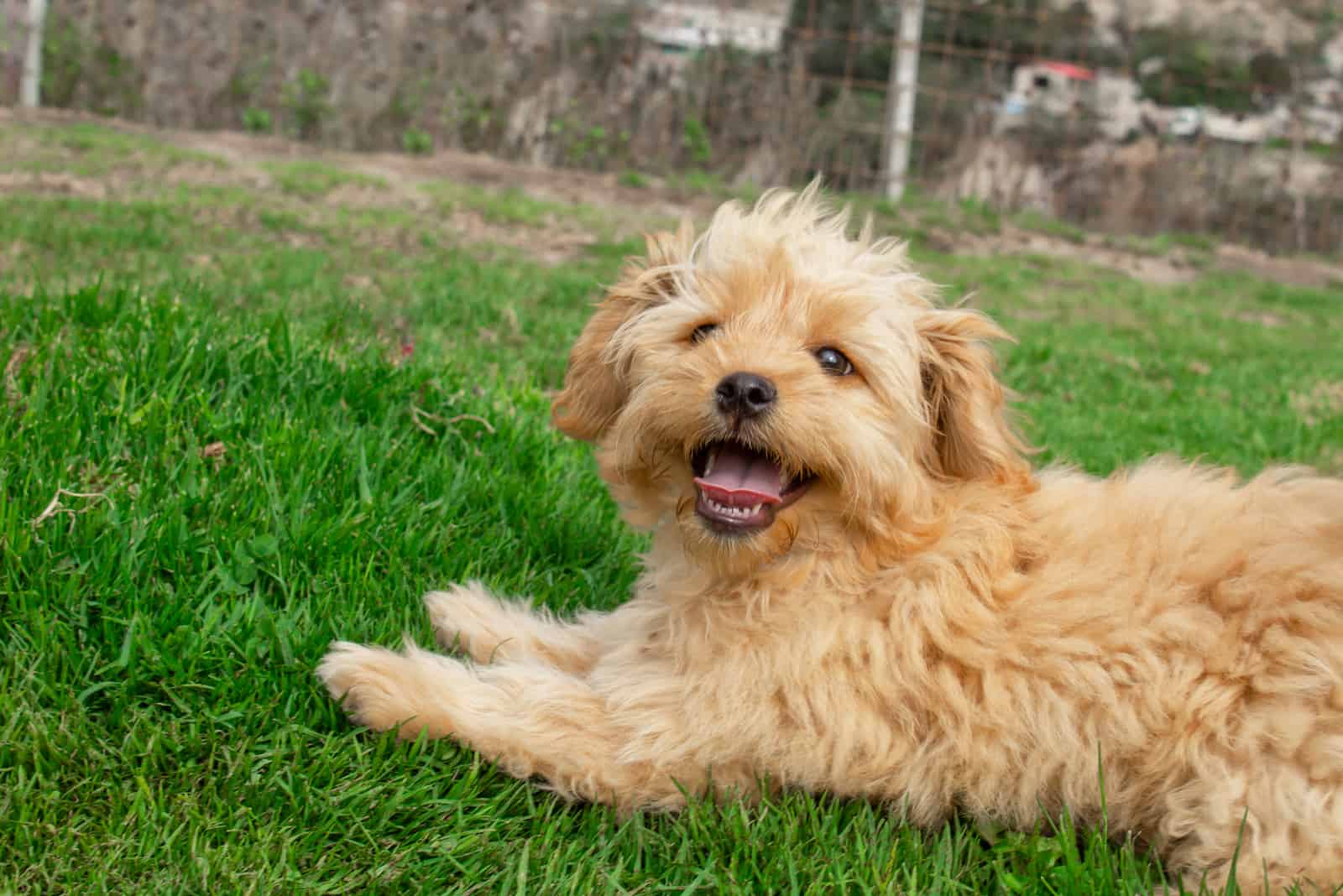
Teacup Goldendoodles aren’t the only miniature Goldendoodles out there. In fact, depending on their size, you have:
• Mini Goldendoodles
• Toy Goldendoodles
• Teacup Goldendoodles
Other than that, you’ll also have a standard Goldendoodle, as well as a medium Goldendoodle.
While there isn’t a precise AKC size chart of this dog breed, most breeders consider regular Goldendoodles to weigh 30 pounds or more. Typically, anything lower than this will fall under some of these three categories.
Mini Goldendoodles are the biggest of miniature Doodles, and they usually weigh between 20 and 30 pounds.
They are the most popular type of a Goldendoodle because they don’t grow up to be fairly large, but they still have the energy of larger dogs.
While they are suitable for confined living spaces, such as apartments, they still need regular walks and exercise. Otherwise, they might get bored or even develop some behavioral issues.
Toy Goldendoodles are small dogs that usually weigh 15-20 pounds and grow up to be around 15 inches high. This makes them great for small apartments, condos, or RVs.
They are small enough for you to pick them up without any problems. Also, they tend to have less energy than larger Doodles. This means you won’t have to spend as much time on walks and playtime.
Teacup Goldendoodles are the smallest of all Goldendoodles. They rarely get taller than 11 inches. If you wonder how much that is, take an 11-inch piece of paper. This is how tall a Teacup Goldendoodle is!
For comparison, a Teacup Goldendoodle can sometimes stay as small as an average Mini Goldendoodle puppy! They are so tiny many people think they are still babies.
These dogs are so tiny you can easily hold them in one hand and carry them around wherever you go. Just watch out so you don’t step on them by accident!
This is how small they can be. In fact, they are smaller dogs than some Chihuahuas!
3. They’re Capable of Many Things
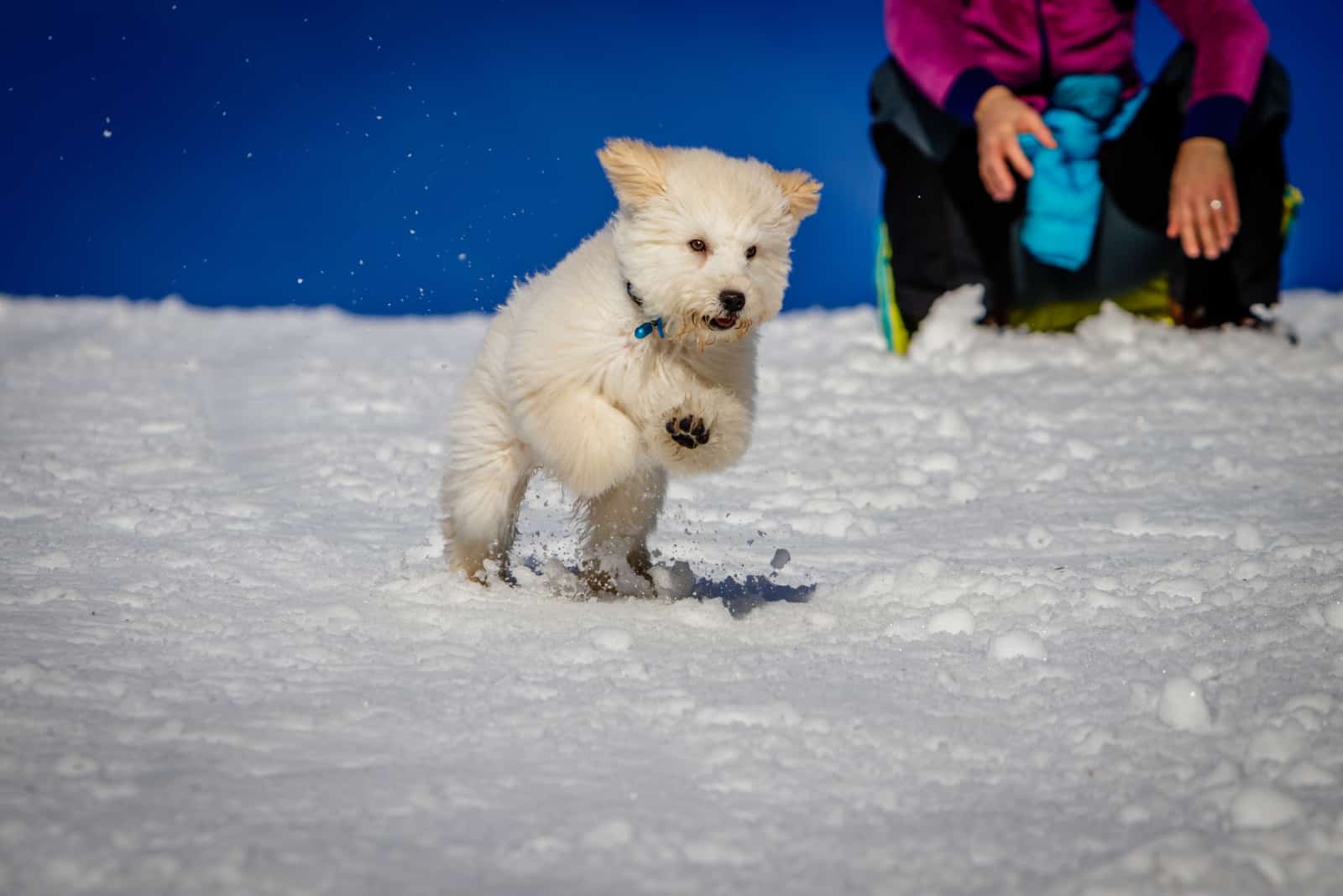
Goldendoodles are some of the most people-loving dog breeds out there. At the same time, they are very intelligent, and you can train them without any issues. Crate training, potty training, any type of training will be a breeze!
All of this combined makes them great for various purposes, other than just being good family companions.
Teacup Goldendoodles, despite their tiny size, make excellent therapy dogs. Some people even use them as service dogs! As they are loyal and protective, they can be a perfect choice for people with disabilities.
While they are too small to be official guide dogs, some people still use them as sniff dogs, check dogs, and steer dogs.
Size isn’t stopping them. It seems like there isn’t a thing this breed can’t do!
4. They Aren’t Good Watchdogs
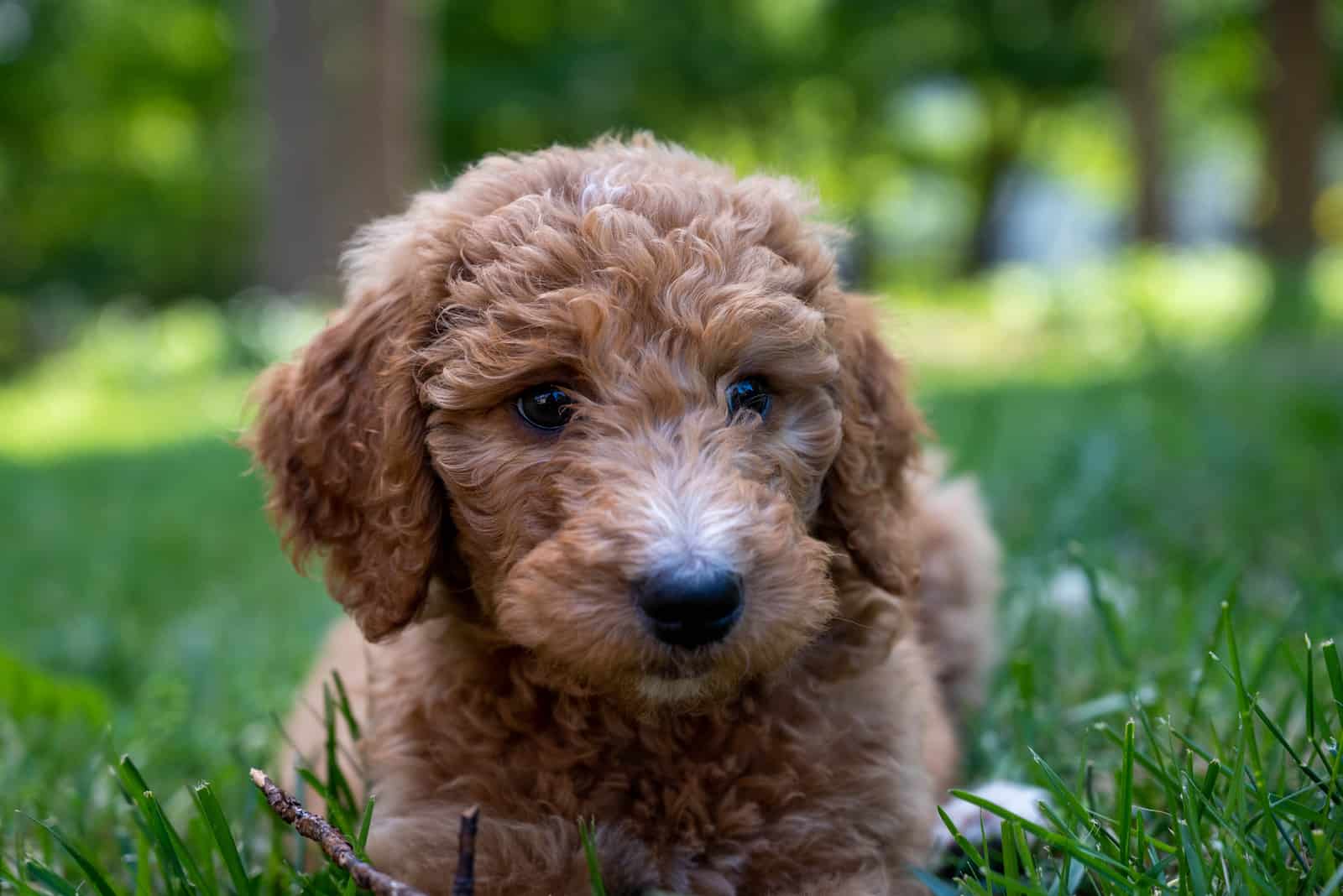
When it comes to watchdogs, despite a common misconception, size doesn’t matter. Some small dog breeds, such as a Chihuahua, or even a mini Poodle, are still great at keeping your home intruder-safe.
However, this isn’t the case with Teacup Groodles. Their smaller size isn’t essential when it comes to this, but their temperament might be.
Petite Goldendoodles might just be too friendly dogs for this task. They’ll love everyone who enters your home, and they won’t pick who they ask for cuddles.
At the same time, this mixed breed isn’t noisy, and it doesn’t bark a lot. In fact, many petowners reported that their Teacup Goldendoodle doesn’t even bark when someone’s at the door! They’ll also rarely be restless at night, so you can expect to get a full night’s sleep most of the time.
You shouldn’t use these dogs in any guarding activity, as they won’t perform well. They simply aren’t made to be unfriendly towards people, even if these people are dangerous robbers or trespassers.
A Teacup Goldendoodle will be entirely open toward total strangers. It will rarely bark or growl, even when scared. While this is great for apartment living, as you won’t have any complaints from your neighbors, they aren’t suitable for your protection.
5. They Are Hypoallergenic
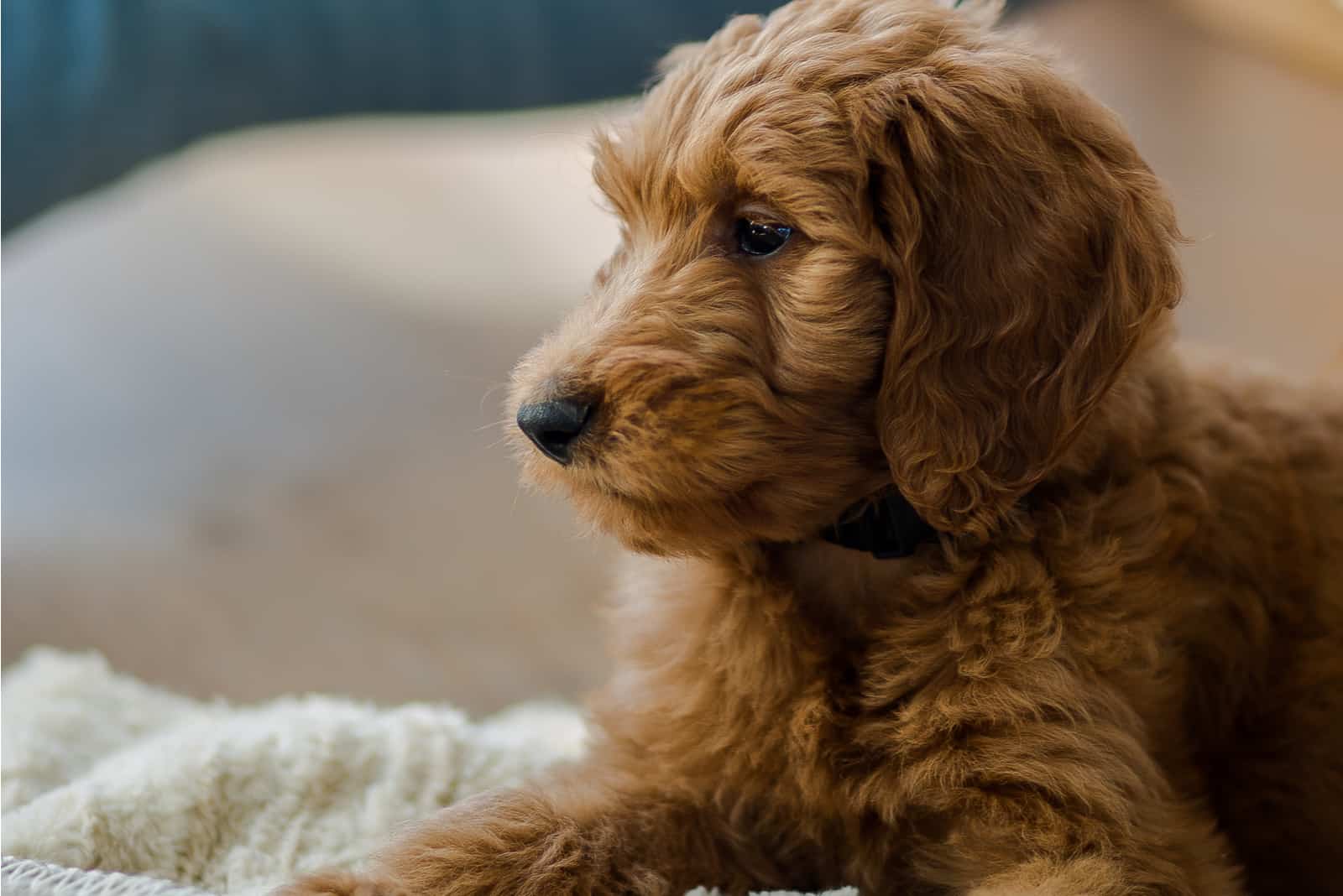
If you’re an allergy sufferer, you’d be happy to know that this is a hypoallergenic dog breed. In fact, this is the main reason these dogs were bred.
Unfortunately for many people with dog allergies, Golden Retrievers are dogs that can cause a lot of breathing issues. This is the biggest downside of this otherwise extremely popular dog breed.
Because of this, breeders created poodle mixes.
When you add Poodle genes to many dog breeds, you’ll get a dog with higher chances of being hypoallergenic. However, even among Groodles, Teacup Goldendoodles take the lead when it comes to allergen production.
While it isn’t dog hair that creates allergies but rather pet dander, the amount of shedding still plays a considerable role in allergic reactions.
Due to their small size, Teacup Goldendoodles are considered very low-shedding. Sometimes, they can even pick after their standard Poodle non-shedding parent. The smaller the dog, the less loose hair it produces.
While it’s hard to predict a designer breed’s genetic, most Goldendoodles have their Poodle parent’s curly coat. These types of fur don’t allow loose hairs to fly away. Instead, you clean them from your pup during brushing sessions.
This, however, means that regular grooming is a must when you have this dog breed.
Of course, every dog produces dander, which means that every dog can worsen your allergic reaction. Still, Teacup Goldendoodles reduce this chance to a minimum.
At the same time, this is great news for dog owners who hate having to clean up their carpets and furniture from hairs every single day. With a Teacup Goldendoodle, you can expect minimal house maintenance.
6. They Are Very Easy To Train
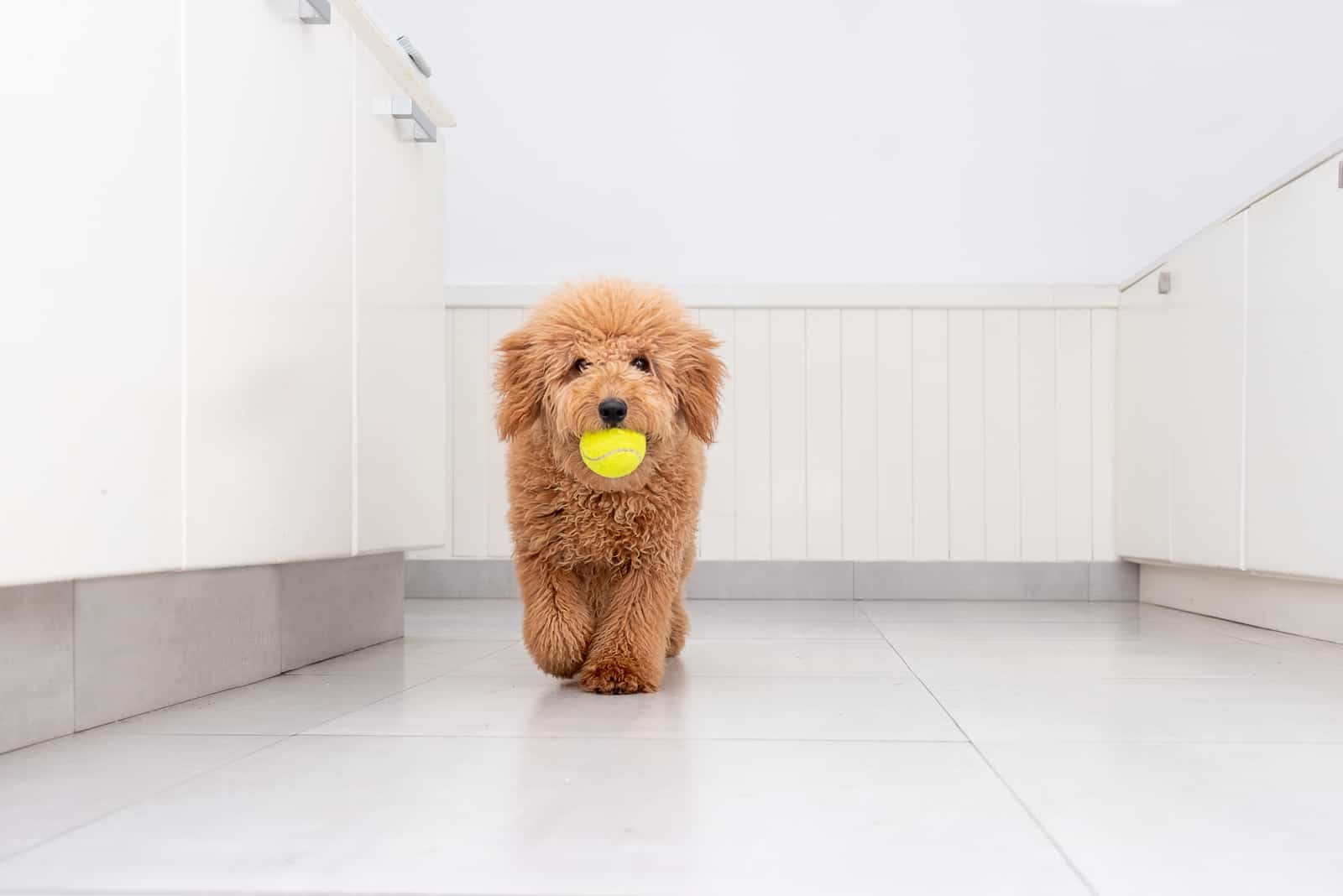
Teacup Goldendoodles aren’t overly active dogs, and they usually don’t require more than 30 minutes of exercise daily. They can quickly adapt to most warm and cold weather climates, so you can take them outside all the time.
While this is an excitable dog breed, it will match its energy levels to your own. In other words, while it will gladly go outside walking by your side, it will also snuggle with you whenever you feel like it.
Since they are so eager to please while also being very intelligent, you can train them efficiently. In fact, they are one of the most trainable dog breeds out there!
Similarly to Labradoodles, Teacup Goldendoodles will swiftly teach any command you give to them without too many repetitions. They have Poodle’s intelligence mixed with Retriever’s agility, which is one reason why they are so good at this.
In fact, this dog breed can quickly learn how to swim, as well! However, it would be best if you never left your Teacup Groodle alone in the water.
They get tired quickly, and they aren’t as strong as their bigger relatives.
Despite their small size, these doggies can help you stay reasonably active, as well. If you needed a companion for a long park hike, grab that leash, and you’re good to go.
7. They Can Have Cocker Spaniel In Them
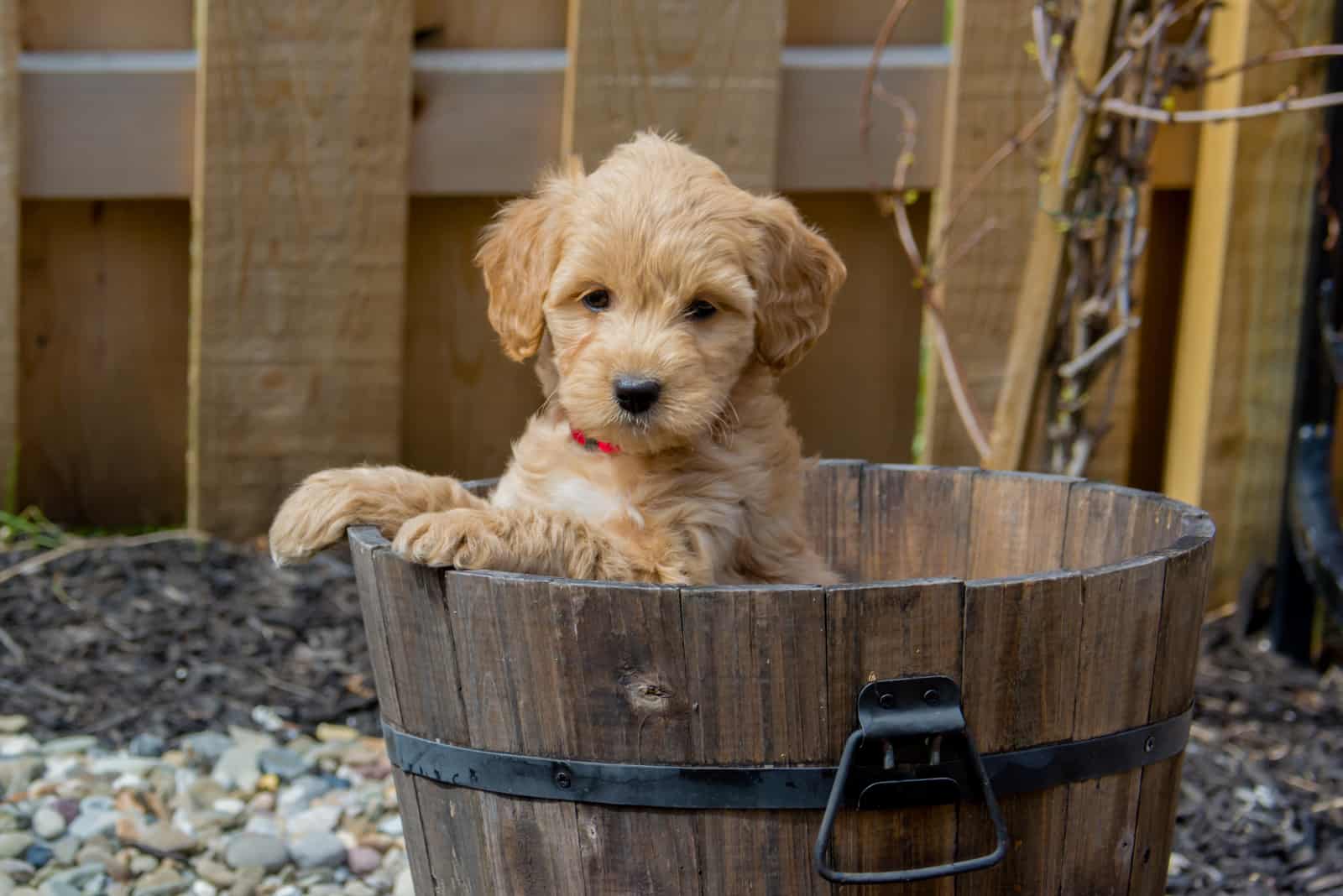
It isn’t easy getting such small dogs. Because of this, some breeders opt to mix Goldendoodles with smaller dog breeds – typically, a Cocker Spaniel or a Toy Poodle is used – to create even more miniature puppies.
When you mix breeds, you can improve the health of the offspring. For sickly pups such as Teacup Goldendoodles, this might seem like a good idea.
This method has some disadvantages. The most notable one is that there are high chances for a puppy to inherit some Spaniel parent trait.
This can ruin the teddy bear appearance of these dogs. Mixing them with a Cocker Spaniel might also change the offspring’s behavior.
Not just that, but if you mix a male standard Goldendoodle with a female smaller dog breed, the pregnancy might be dangerous for the mother, as she might end up carrying too big puppies for her womb.
Even if the mother is the bigger one, this will usually end with just a few small puppies. This doesn’t pay off for most breeders.
This is why most breeders prefer creating Teacup Groodles by breeding small Goldendoodles or even runts together.
If you breed small dogs with one another, you are bound to get even smaller puppies over time. This can result in creating tiny offspring. However, it takes up a lot of time.
Not just that, but there is usually a reason why a dog is tiny, and that is usually his bad health. Runts commonly have some genetic defect, such as joint problems or a heart condition. Some got sick right after birth.
Whatever the reason is, runts aren’t known to be healthy, and if you breed them, you should introduce healthy genes instead of mixing them with another runt. This way, you’ll end up with a litter of unhealthy pups.
8. Some Are Dwarfs

The previous two methods aren’t the only options breeders have when creating Teacup Goldendoodles. Some prefer introducing the gene for dwarfism in hopes of having a smaller dog breed.
However, this also has plenty of disadvantages.
First off, dwarfism doesn’t solely make dogs smaller. It takes a lot of careful breeding to create good-looking puppies.
Dwarfism doesn’t merely make dogs tinier all around. Most Groodles with dwarfism have shorter limbs, similarly to Dachshunds. While this may seem cute, it isn’t how people imagine a Teacup Goldendoodle.
At the same time, this type of growth can cause many health concerns, particularly to your pup’s bones.
Spinal and hip diseases are common due to the underdevelopment of the tissues. Some Goldendoodles with dwarfism also have hormonal abnormalities.
Dwarfism on its own is considered a defect because it does ruin the quality of life of the creatures it affects. It causes many issues that make it hard to move around, causing discomfort, even pain, as the dog grows older.
Not just that, but introducing the dwarfism gene into a bloodline can be quite challenging. To ensure you get a pup with this gene, you should find two dogs with dwarfism of the opposite gender.
This is much more difficult than it might seem at first glance.
9. They Are Prone To Number Of Health Issues
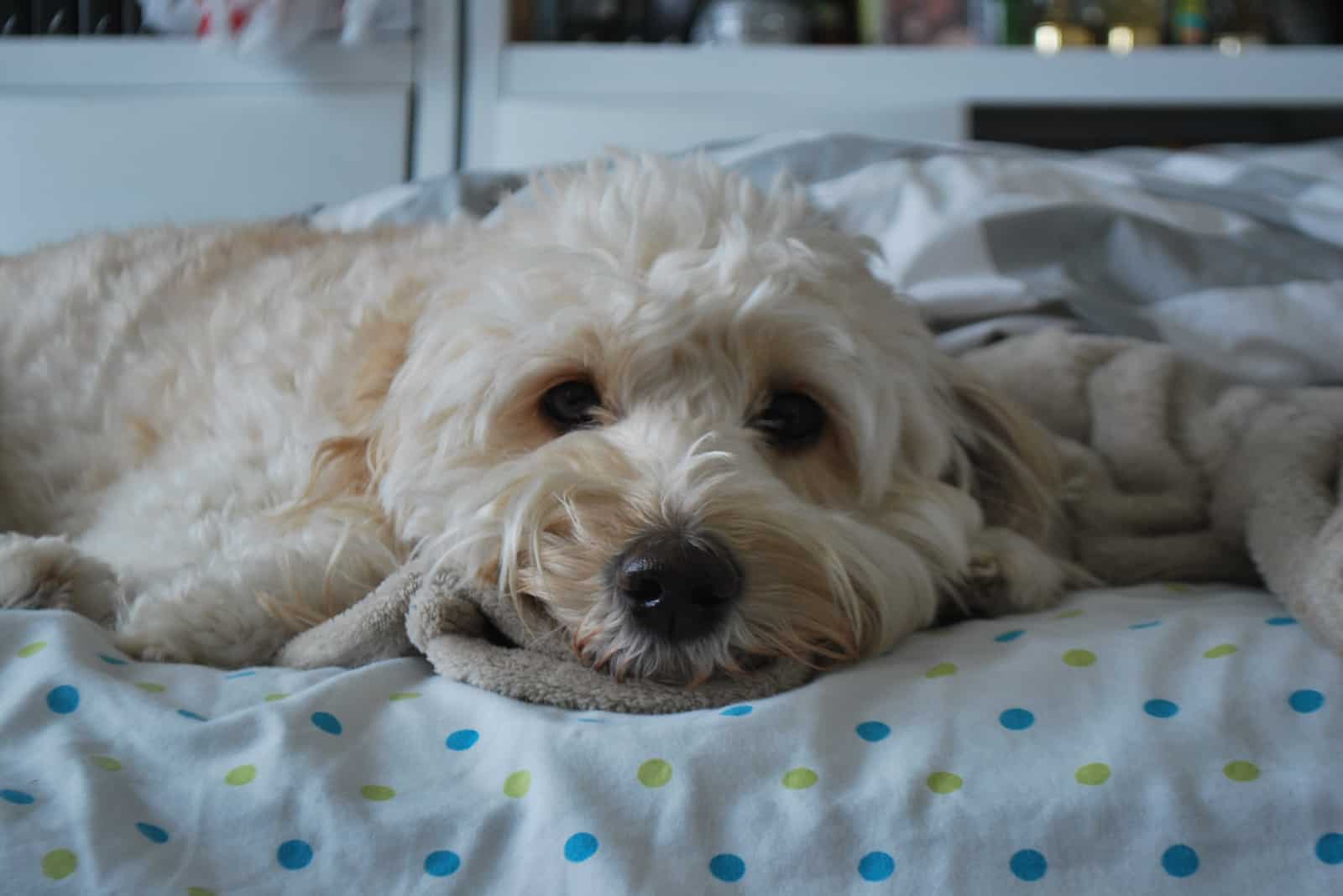
All dog breeds have specific health issues associated with it. However, when it comes to Teacup Goldendoodles, the concerns double up.
Both Poodles and Golden Retrievers are prone to some diseases, such as cancer. While there is always a chance the offspring of two purebred dogs will lose its parent’s weaknesses, it might also get the worst of them both.
Not just that, but the tiny growth on its own has several health issues caused by the already mentioned breeding of the runts or parents with dwarfisms.
Teacup Goldendoodles have a higher chance of developing plenty of dangerous health conditions.
Progressive retinal atrophy is one of the most common conditions miniature Goldendoodles face. This disease causes the bilateral degeneration of the eye, which will end in blindness.
Another condition these pups are prone to is Von Willebrand’s disease. This is a genetic blood clotting disorder caused by the lack of the plasma protein that encourages blood clotting. Dogs suffering from it will have severe bleedings from the tiniest of cuts.
Bloat is another issue common in Goldendoodles, but, luckily, it’s more prevalent in bigger dogs.
While it isn’t a disease, Patellar Luxation is a knee injury that is quite common in all toy breeds, including the Teacup Goldendoodle.
Hypothyroidism is the inadequate production of thyroid hormones. It is quite common in dogs with dwarfism.
Teacup Goldendoodles can also suffer from hip dysplasia, allergies, and ear infections.
Take A Good Look At The Breeder Before Making A Purchase
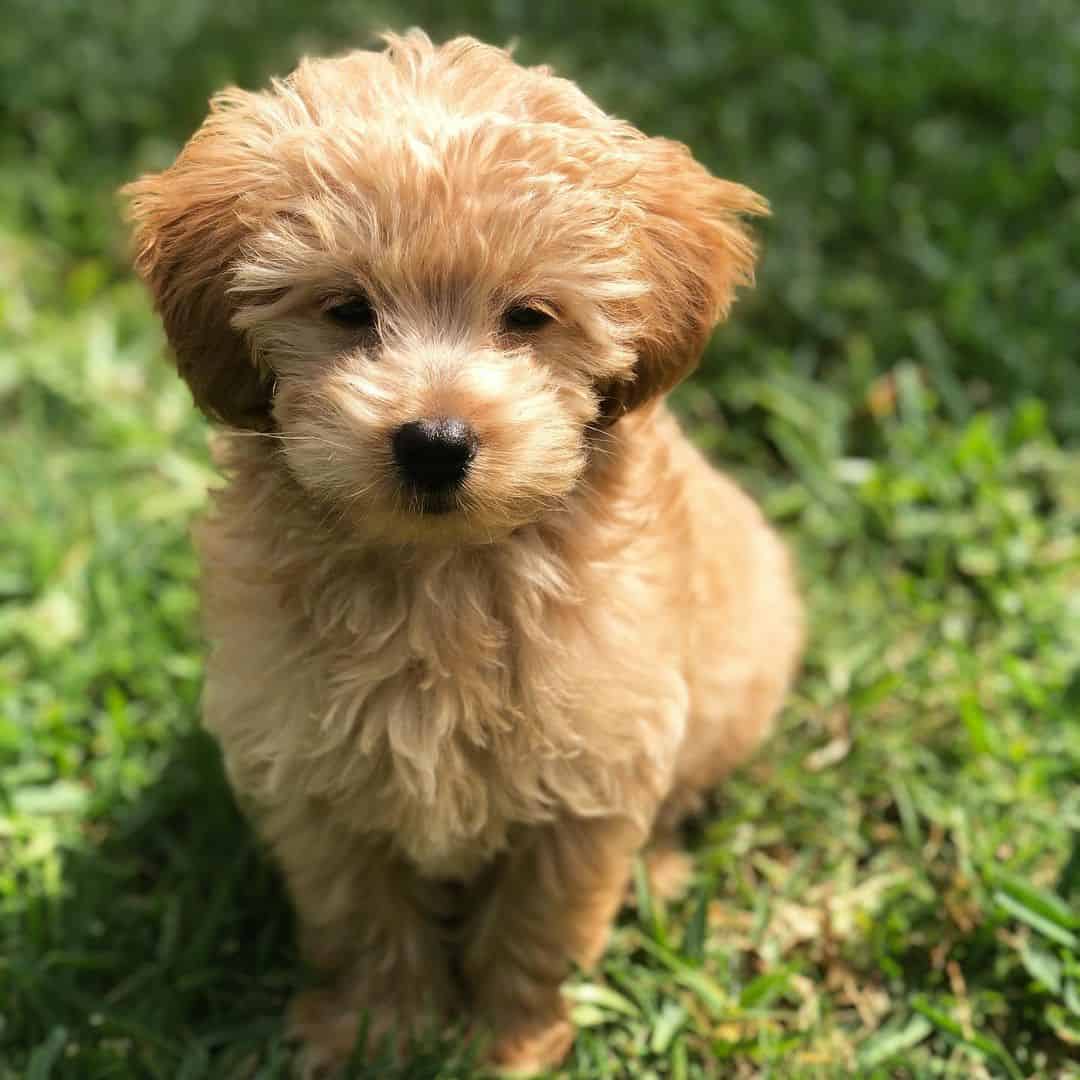
Photo from: @_loveybear_
All Goldendoodles are hybrids, making them complicated to breed. However, when you add miniature growth to the mix, things get a lot more complicated.
Teacup Goldendoodles can have a wide variety of health issues, especially if they are products of runts and dogs with dwarfism.
While there isn’t a guarantee your future pup will be entirely healthy, you can always decrease the chances of getting a sick dog by working with a reputable breeder.
You might want to take a look at the Goldendoodle Association of North America’s list of breeders to make sure.
When you support a trusted breeder, not only are you ensuring your companion is healthy, you’re also preventing the further spread of unhealthy genetics and unethical breeding methods.
Never get your pooch from a puppy mill. However, adoption is always right to consider, so take a look at the local shelter or rescue organization.
Read Next: Teacup Miniature Dachshund – The 411 On The Tiniest Wiener Dog

















